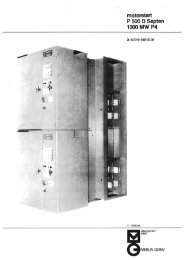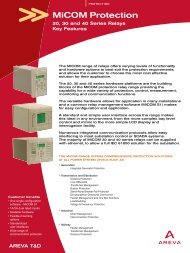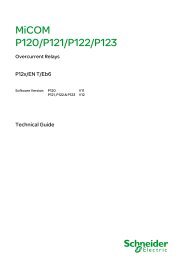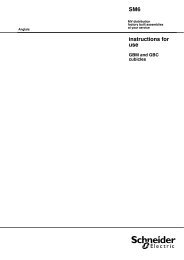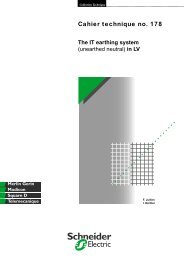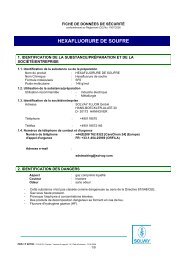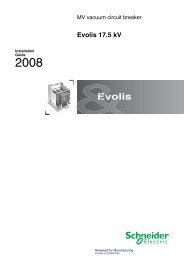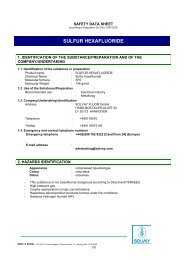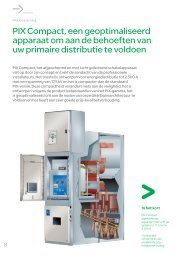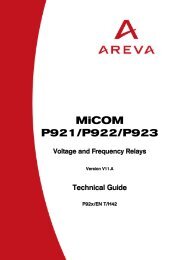You also want an ePaper? Increase the reach of your titles
YUMPU automatically turns print PDFs into web optimized ePapers that Google loves.
Heating due to additional losses in machinesand transformersc additional losses in the stators (copper andiron) and principally in the rotors (dampingwindings, magnetic circuits) of machines causedby the considerable differences in speed betweenthe harmonic inducing rotating fields and therotor. Note that rotor measurements (temperature,induced currents) are difficult if not impossible,c supplementary losses in transformers due tothe skin effect (increase in the resistance ofcopper with frequency), hysteresis and eddycurrents (in the magnetic circuit).Heating of cables and equipmentLosses are increased in cables carryingharmonic currents, resulting in temperature rise.The causes of the additional losses include:c an increase in the rms value of the current foran equal active power consumed;c an increase in the apparent resistance of thecore with frequency, due to the skin effect;c an increase in dielectric losses in the insulationwith frequency, if the cable is subjected to nonnegligiblevoltage distortion;c phenomena related to the proximity ofconductors with respect to metal cladding andshielding earthed at both ends of the cable, etc.Calculations for steady state can be carried outas described in IEC 60287.Generally speaking, all electrical equipment(electrical switchboards) subjected to voltageharmonics or through which harmonic currentsflow, exhibit increased energy losses and shouldbe derated if necessary.For example, a capacitor feeder cubicle shouldbe designed for a current equal to 1.3 times thereactive compensation current. This safety factordoes not however take into account theincreased heating due to the skin effect in theconductors.Harmonic distortion of currents and voltages ismeasured using spectrum analysers, providingthe amplitude of each component.It is important to use current or voltage sensorshaving a sufficient band width for the measuredfrequencies.The rms value of the distorted current (orvoltage) may be assessed in any of three ways:c measurement using a device designed to givethe true rms value,c reconstitution on the basis of the spectrumprovided by spectral analysis,c estimation from an oscilloscope display.Cahier Technique <strong>Schneider</strong> <strong>Electric</strong> no. 152 / p.7



